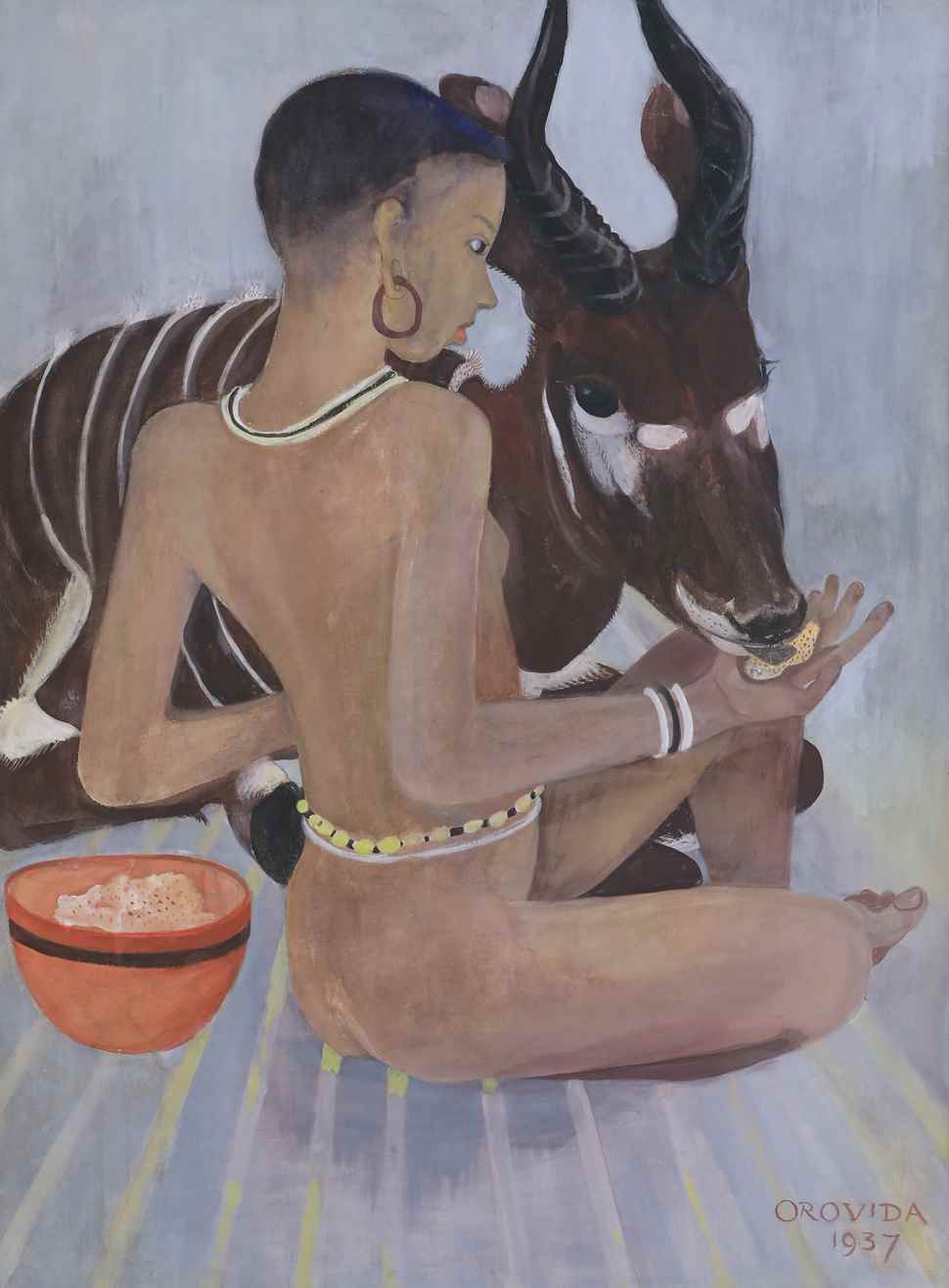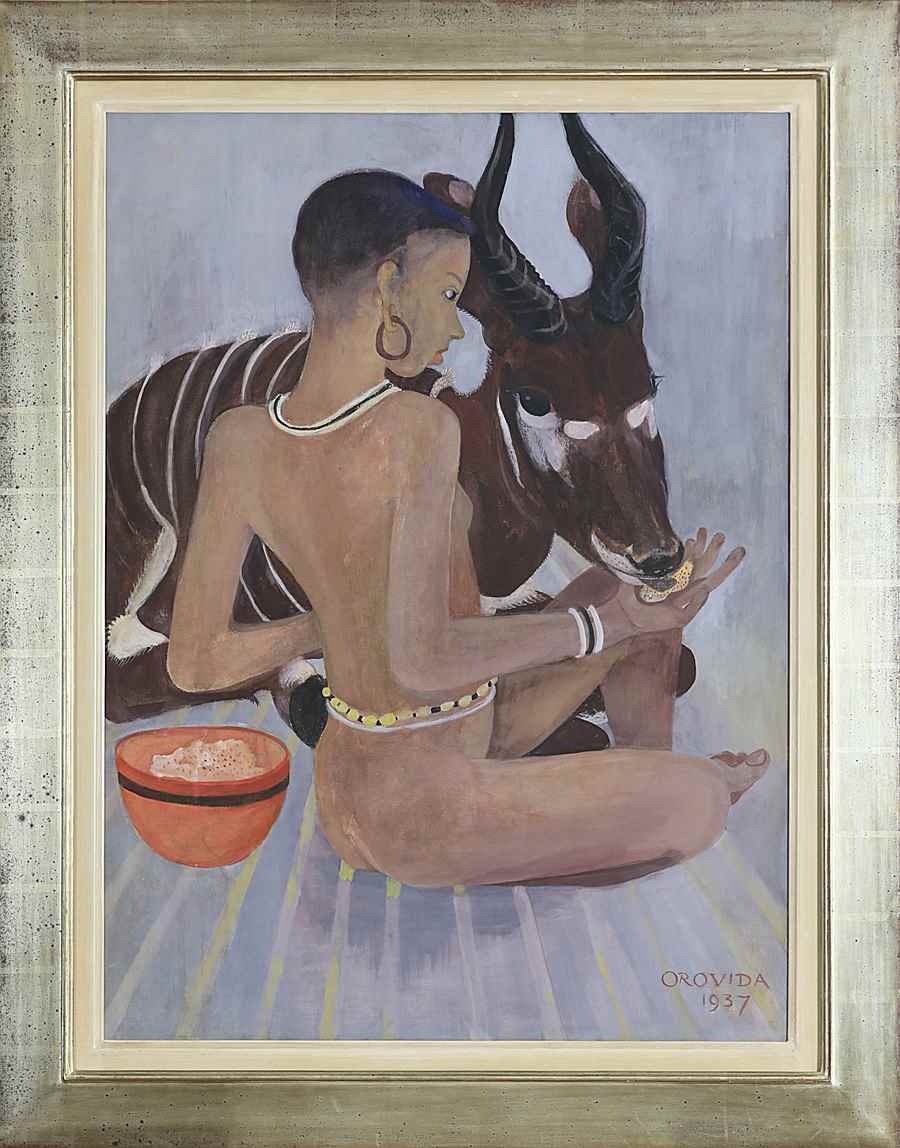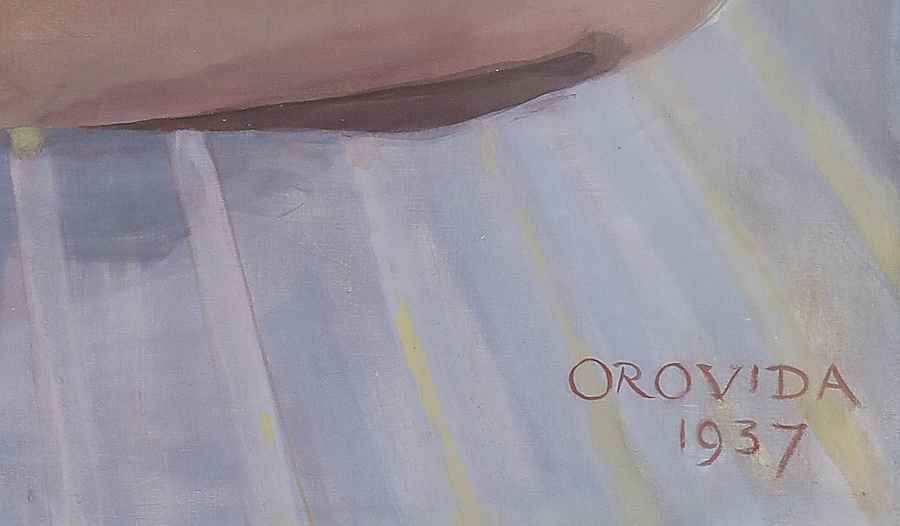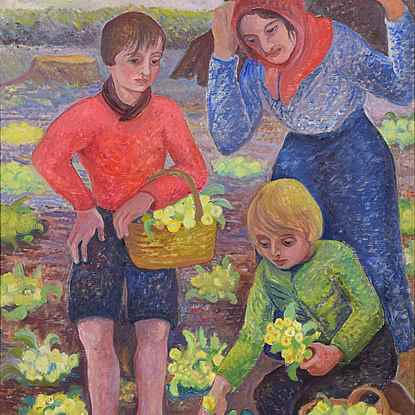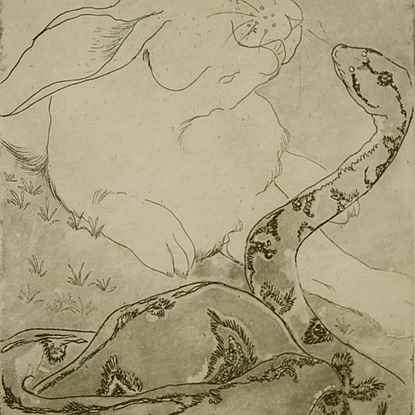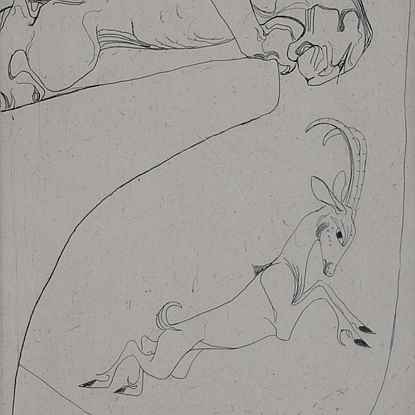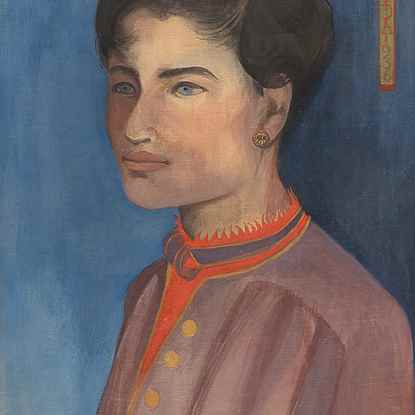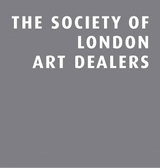Orovida Pissarro (1893 - 1968)
Dinka with a Bongo
Request Viewing
Egg tempera on linen, laid on board
85 x 62.3 cm (33 ½ x 24 ½ inches)
Signed and dated lower right Orovida 1937
-
Provenance
Redfern Gallery, London, August 1937
Collection of Mrs Tongo, from whence to:
Sotheby's, London,15th December 1965
Royal Academy, London 11th May 1966, no. 728
Reverend Canon Ernest A Bawtree, Cambridgeshire, England
Gillian Jason Gallery, London, acquired from the above, 8th November 1984
Christie's, London, 7th June 1985 -
Exhibitions
London, Redfern Gallery, Summer Salon, 5th August - 25th September 1937, no. 12
London, Royal Academy, 1966, no. 728 -
Literature
K L Erickson, Orovida Pissarro: Painter and Print-Maker with A Catalogue Raisonné of Paintings, (doctoral thesis), Oxford, 1992, Appendices, no. 69, p. 73-74 (illustrated)
-
Description
Orovida’s first series of imaginative works, executed in the 1920s and 30s, reflect her interest in non-Western art. This was largely fuelled by the fashion for Orientalism in fin-de-siècle France, but also by the works of Paul Gauguin and those of her uncle Georges Manzana Pissarro, particularly his solo show at the Musée des Arts Décoratifs in Paris in 1914. Orovida was struck by her uncle’s Orientalist and Decorative portraits and his use of gold and silver. The flattening of the picture plane and the increasingly stylised treatment of her subjects would also have been influenced by exhibitions which she frequented in London, including a presentation on Persian art at Burlington house in 1930-31 as well as her numerous trips to the British Museum. To Orovida, non-Western art offered greater creative freedom, as she later wrote: ‘Western art has led straight to the photo and eastern art is still free.’ As a result, her early works often show subjects such as Mongolian horse-riders, African dancers, Persian princes and exotic animals executed in egg tempera and bodycolour which she made herself and applied in thin, delicate washes to silk, linen and paper sometimes embellished with brocade borders. Ironically, Orovida once famously stated in a newspaper interview that the furthest east she had ever travelled was the British Museum.
This original painting by Orovida Pissarro is available for immediate purchase.
Artist's Biography
Orovida Camille Pissarro, Lucien and Esther Pissarro’s only child, was the first woman in the Pissarro family as well as the first of her generation to become an artist. Born in Epping, England in 1893, she lived and worked predominantly in London where she became a prominent member of several British arts clubs and societies.
She first learned to paint in the Impressionist style of her father, but after a brief period of formal study with Walter Sickert in 1913 she renounced formal art schooling. Throughout her career, Orovida always remained outside of any mainstream British art movements. Much to Lucien's disappointment she soon turned away from naturalistic painting and developed her own unusual style combining elements of Japanese, Chinese, Persian and Indian art. Her rejection of Impressionism, which for the Pissarro family had become a way of life, together with the simultaneous decision to drop her famous last name and simply use Orovida as a ‘nom de peintre’, reflected a deep desire for independence and distance from the weight of the family legacy.
Orovida's most distinctive and notable works were produced from the period of 1919 to 1939 using her own homemade egg tempera applied in thin, delicate washes to silk, linen or paper and sometimes embellished with brocade borders. These elegant and richly decorative works generally depict Eastern, Asian and African subjects, such as Mongolian horse-riders, tribal dancers and Persian princes, often engaged in dancing or hunting rituals.
The second half of Orovida's painting career, however, is marked by a sudden and dramatic change in style and subject matter. Due to the outbreak of the Second World War, there was a shortage in eggs which led Orovida to take up oil painting. This change in medium led her to embrace contemporary subjects from everyday life, thus returning to a more naturalistic style. Orovida was a gifted printmaker and worked with etching, engraving and lithography. Also an accomplished draughtsman, Orovida would observe animals at the London Zoo which she then juxtaposed with images of the local people of the countries they originally inhabited. Throughout her career she created many etchings of which both the British and the Ashmolean Museum in Oxford have a large collection.
The journey of Orovida’s career serves as a symbolic illustration of her relationship with her heritage. Her attempt to break away from tradition to find her own voice, only to return to her roots is apparent throughout her body of work which is emboldened by this journey. Towards the end of her life she was instrumental in developing the Pissarro family archive, established by her parents at the Ashmolean Museum in Oxford. Besides the Ashmolean museum her works can be found in many public collections throughout the UK. Orovida sadly never married or had children.


